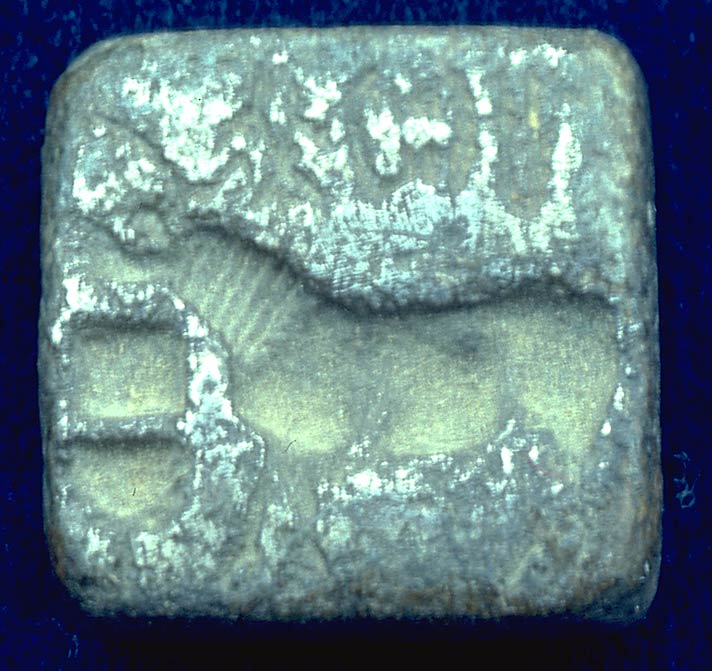
One of two silver unicorn seals found in Mohenjo-daro during the 1920s.
Trade between Indus Valley and Mesopotamia appears rather skewed in IVC's favour. IVC exported Gold jewelery, Ivory seals & boxes, Timber, Cotton textiles, Copper & bronze fish-hooks, Carnelian & precious stone beads, Live chicken, Shell & bone inlays, and even Water buffaloes. Mesopotamia exported only Silver, Tin and Copper ingots, Woollen textiles and Bitumen. Could it have been be sex trafficking from Ur, Dilmun and Magan to Sutkagen Dor, Sokhta Koh, Balakot and Allahdino?
Jane McIntosh
I think sex trafficking can be discounted. Woollen textiles seem likely to have been an important export to the Indus, as they were from Mesopotamia to other regions at this time and later: they were a famed quality product and if, as I think likely, the Harappans did not keep woolly sheep, there would have been a huge market for woollen textiles in the Indus region. The Indus had its own sources of copper, tin and bitumen, though they may have required more bitumen than they could locally obtain, to maintain their ships. Silver was probably another material the Harappans wanted to obtain from Mesopotamia: it may have been more highly valued than the rare finds of silver objects currently suggest. In addition there may have been quality Mesopotamian products in other perishable materials that the Harappans found it worth obtaining.
Unlikely as it may seem now, I think woollen textiles could have been the main attraction for the Harappans in trading with Mesopotamia.
Rita Wright
I cannot answer your question and frankly doubt what you are suggesting. There is absolutely no evidence along the lines you asked.
I suspect that some perishable materials were traded, such as linen or woollen textiles. The Mesopotamians produced great quantities of them, more than they would need for ordinary consumption. That’s one idea that works for me. There may have been exotic foods or beverages that people in the Indus desired. Possibly there were animals domesticated for something like special wools were traded.
Shereen Ratnagar
I think the bulk of the traffic moved towards Mesopotamia. (Some chauvinists don’t like the idea of Mesopotamia being the richest and most densely populated land, however!)
It is said that prostitution is the oldest profession, but isn’t sex trafficking a huge leap of imagination? All I can say is that we have no hint of it in the documented trade of the 3rd and 2nd millennia across western and South Asia. The fate of female slaves is of course a consideration—they were often subjugated as sexual partners in Mesopotamia.
As for slaves themselves: please remember, students: only classical Greece and Rome were actual “slave societies”, whereas the role of slave labour was marginal in the bronze age societies of western and South Asia.
